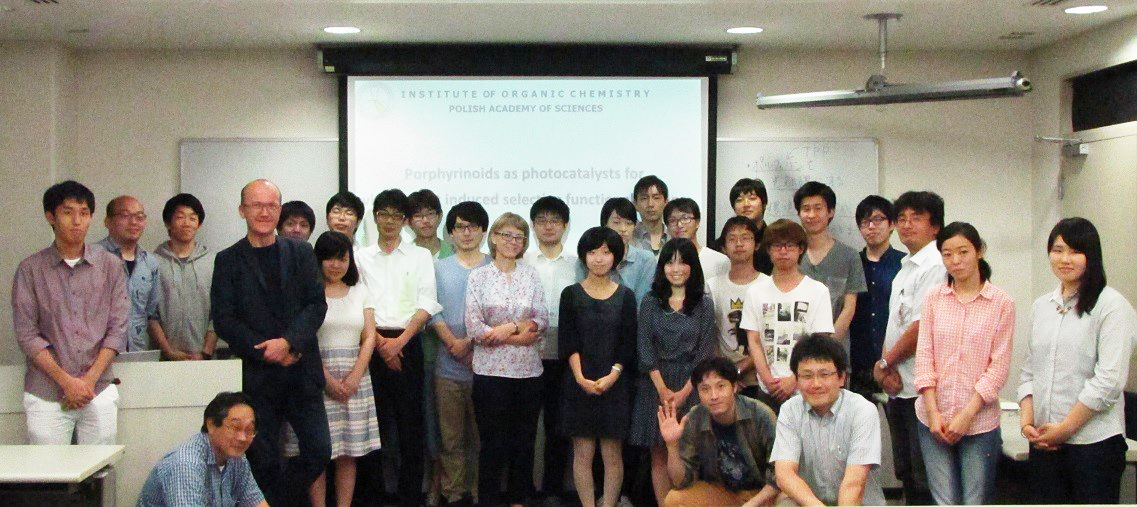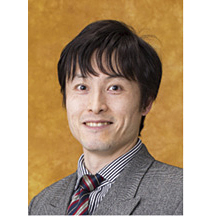Report:Dorota Gryko from the Institute of Organic Chemistry Polish Academy of Sciences, gives a seminar at UEC, Tokyo.
July 21, 2016
Professor Dorota Gryko gave a seminar at UEC, Tokyo, entitled, “Porphyrins as photocatalysts for visible-light induced selective functionalizations of aldehydes”, hosted by Masumi Taki, Associate Professor at the Department of Engineering Science.
Professor Gryko is a green-organic chemist undertaking research on projects that include engineering of photocatalysts to achieve environmentally-friendly chemical reactions with no waste or pollutants.
The interdisciplinary nature of the seminar attracted students and faculty members from many departments at UEC. The talk was followed by more informal discussions about current research and collaboration in the future.
Summary of the seminar
Our life depends on porphyrinoids and these tetrapyrroles are referred as pigments of life. They are responsible for oxygen transport (heam), electron transport (cytochrome c), and photosynthesis (chlorophyll a) - the most crucial processes for human being. Without the chlorophylls and bilins life as we know would not exist on our planet. This green pigment is, in the first, instance responsible for transforming light energy into the chemical reactivity with the ultimate production of starch (photosynthesis). In the energy shortage era, we should follow nature and take an advantage Pigments of life from the unlimited source of energy.
Although photocatalysis has been already applied in few industrial applications (photooxygenation of citronellol for the synthesis of rose oxide, artemisinin, photocatalytically induced radical polymerization), these represent a small fish in the big ocean of science. In this line photoredox catalysis has recently emerged as powerful tool for the formation of C-C bonds mainly catalyzed by ruthenium and iridium complexes. But, they are both very expensive and undesirable by pharmaceutical industry. On the other hand organic dyes exhibit considerable advantages and in fact they have been shown to act as photoredox catalysts with eosin Y being the most widely studied.
References
M. Giedyk, K. Goliszewska, K. ó Proinsias, D. Gryko, Cobalt(I)-catalysed CH-alkylation of terminal olefins, and beyond, Chem. Comm. (2016).
M. Giedyk, K. Goliszewska, D. Gryko, Vitamin B12 catalysed reactions, Chem. Soc. Rev., (2015).

- Professor Dorota Gryko from the Institute of Organic Chemistry Polish Academy of Sciences.

- Professor Dorota Gryko giving her seminar at UEC.

- Group photograph with the participants of the seminar.
Related information on research by Masumi Taki, Associate Professor, Department of Engineering Science.
Media coverage
- ● June 2016 Issue of UEC e-Bulletin
- ● June 2014 Issue of UEC e-Bulletin
- ● UEC Press Release
4 February 2016


 UEC site
UEC site